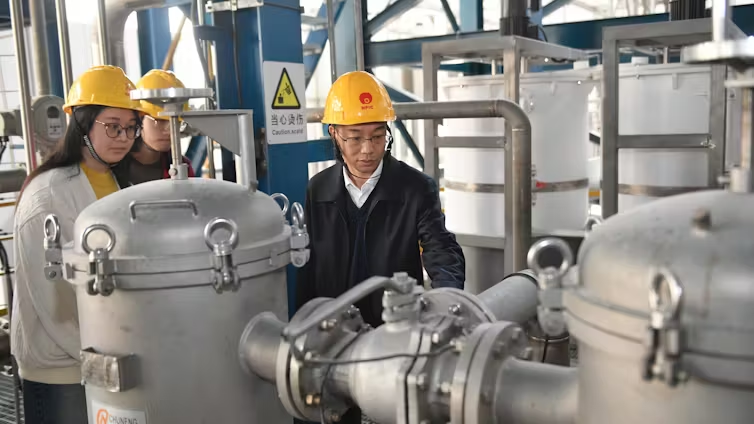As part of an op-ed series, FIU News shares the expertise and diverse perspectives of members of the university community. In this piece, Philip Stoddard, professor of biological sciences, offers his perspective on the need to discuss relocation and migration in response to sea level rise. This piece first appeared in The Invading Sea, a collaboration of South Florida Sun Sentinel, Miami Herald, Palm Beach Post and WLRN Public Media. The piece later appeared on FIU News. The opinions expressed in the piece are his own.
Sea-level rise is making Miami’s “high ground” mighty interesting to investors.
Two recent studies found that property sales in Miami have begun to factor in elevation as savvy investors heed the new mantra “sell low, buy high.” As low-income neighborhoods at higher elevations evolve into hot properties, “climate equity” and “climate gentrification” become serious concerns.
The emerging discussion centers on whether we can help low-income people avoid being displaced, yet again, by the affluent. However, a question that has not been asked is whether poor people will actually benefit from policies that encourage them to stay in a high-risk city that offers them limited economic opportunity. As Miami’s climate risks increase, low-income people will do better to take the money and run.
Gambling theory tells us that if the odds are even slightly against you, as at the roulette table, then the longer you stay, the more the house advantage eats into your pocket.
Every year Miami residents play hurricane roulette and climate change is not helping our odds. People with little money pay the greatest personal price in hurricanes and floods.
Low-income housing tends to be older, built before the new wind codes and poorly maintained. Hurricanes do more damage to these dwellings and tend to soak people’s belongings when the roof fails.
Many of South Dade’s middle class residents lost belongings to rain damage in Hurricane Andrew, but the same happened to many lower-income families in 2005 when the less intense Katrina-Wilma duo struck the region.
People working in the service industry got the double whammy. Not only was their housing especially vulnerable, but so were their jobs. If the people who work in stores and restaurants can’t work because those places are shut down for repairs, they’re in trouble. They usually have no savings or insurance. They struggle to feed their families and pay the rent even before they try to replace water-damaged possessions.
The only bright note is that FEMA found that income replacement insurance policies for low-income families help a lot and cost relatively little.
We might hope that Miami’s population is finding a way up the income scale, but odds are not good. According to economist Raj Chetty’s Equality of Opportunity Project, relatively few people in Miami and in much of Southeast are on an upward economic path.
Miami’s service-dominated economy employs lots of people in low-paying, dead-end jobs. GoBankingRates.com reports that 52 percent of Florida households have less than $1,000 in cash savings. Add our high housing and transportation costs and a lot of Miami-Dade residents live on the economic feather-edge.
The longer people stay here without gaining economic security, the greater their chances of being devastated by storm losses. The smartest long-term move for many is to move to a place with less risk and greater opportunity. Gambling theory suggests the sooner the better.
Accordingly, public assistance policies that encourage the working poor to remain in Miami without providing a better path to significant economic gain may lead to their devastation.
The cavalry is not on the way. Quite the opposite.
The state Legislature preempted local wage control and refused to spend the Sadowski Affordable Housing Trust Fund on affordable housing. Miami-Dade Mayor Carlos Gimenez just vetoed a living wage requirement for workers on county-owned properties, and the County Commission approved construction of the world’s biggest shopping center in a wetland, ostensibly because it will provide even more low-paying service jobs. On top of political recalcitrance, climate change will increase our cost of living — significantly.
Am I giving up too easily? To keep people safely in place requires more than protecting low-income neighborhoods from gentrification, if that’s even possible.
Rent stabilization in New York City has shown that landlords will not upgrade old housing at stabilized rents. Raising Miami-Dade’s meager median area income would do the most for our housing problems, but that doesn’t seem to be in the cards.
For many, early migration may be the best path to security. That option doesn’t square with our can-do ethos, but it jibes with our refuse-to-do reality.
Relocation is not a radical idea. Significant migration would not only provide greater economic safety to those who move early, it would tighten Miami’s labor markets and drive up wages, addressing the other half of the problem. It won’t happen without help from the nonprofit community, since low-income people are society’s least mobile group. But it’s worth discussing and maybe worth some effort.
Philip Stoddard is a professor of biological sciences at Florida International University and fifth term Mayor of the City of South Miami.






